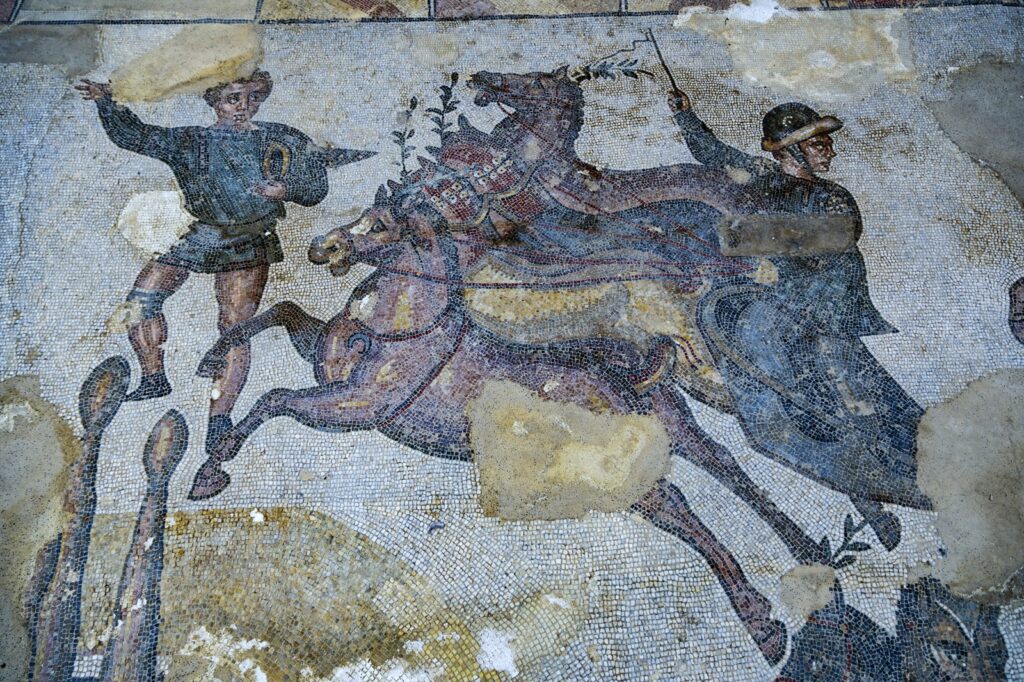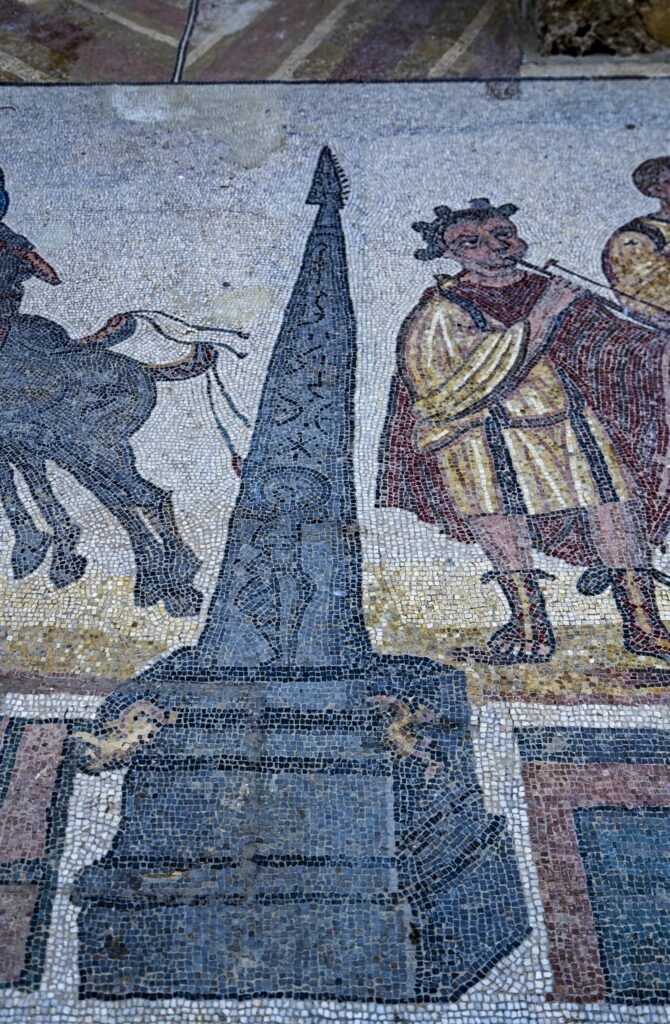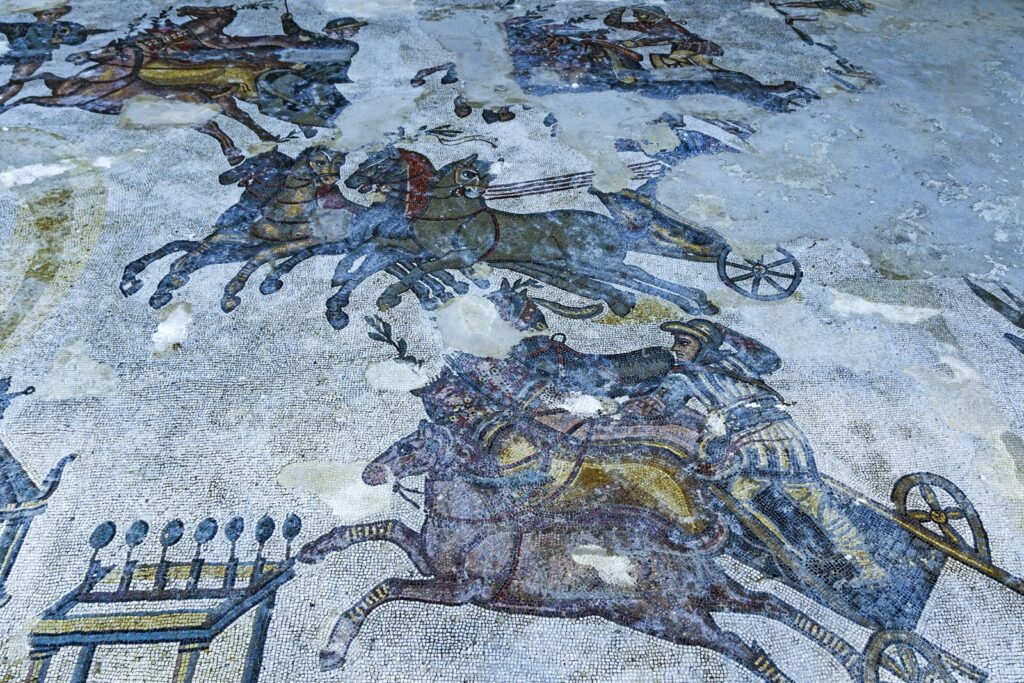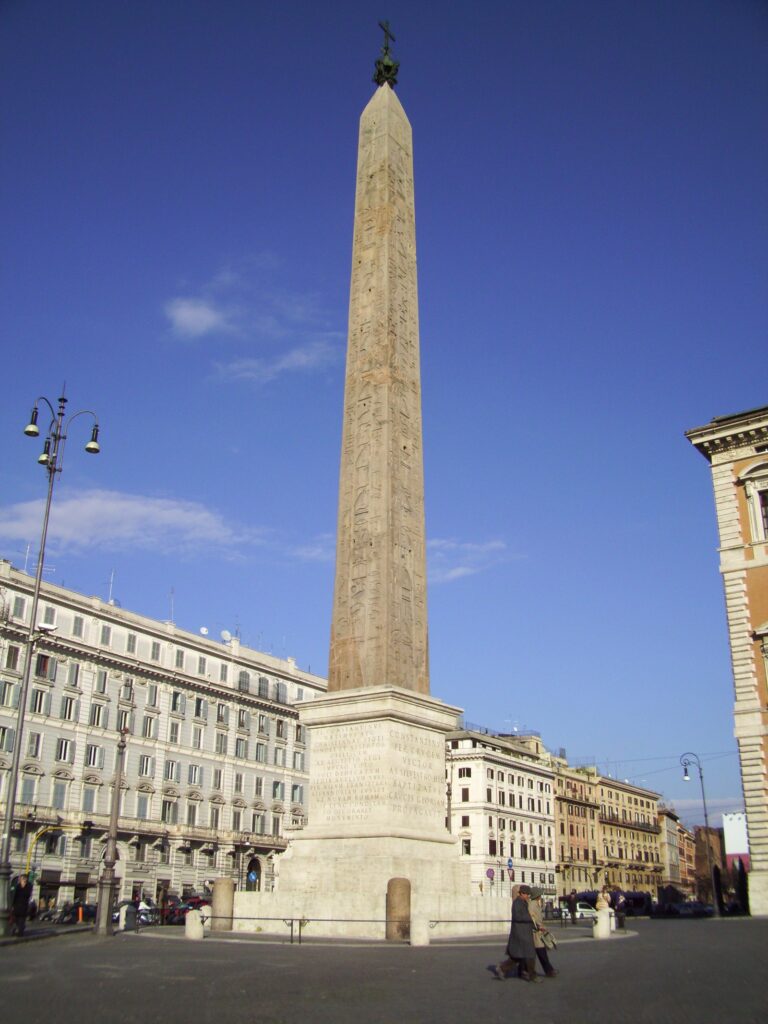The scenes depicted in the mosaics of the Villa Romana del Casale not only bring us closer to the profile of its dominus, they also suggest some questions still unresolved by scholars.
The majority believe that the late antiquity building and its mosaic decoration were carried out in a single phase, but a precise time frame has not yet been identified.
The observation of the style and the subjects represented in the mosaics of some rooms has led art historians to a possible date between 320 and 360 AD. This hypothesis is countered by an additional theory dating back to a period between 290 and 312 AD. An interesting clue for the date is the obelisk reproduced on the
spina
This hypothesis is countered by an additional theory dating back to a period between 290 and 312 AD. An interesting clue for the date is the obelisk reproduced on the
spina
of the
Circus Maximus
,
 which decorates the floor mosaic of the
biapsidal hall
which decorates the floor mosaic of the
biapsidal hall
, known for the dynamic scene of the quadriga (chariot) race.
 Its structure is a point of contention for experts; some believe that it is the
Obelisk of Augustus
Its structure is a point of contention for experts; some believe that it is the
Obelisk of Augustus
, decentralised in the mosaic of Piazza Armerina, perhaps to represent its transfer during the year 327 AD to make room for a
larger obelisk
 that arrived in Rome only thirty years later by
Constantius II
that arrived in Rome only thirty years later by
Constantius II
. The race seems to take place around a single obelisk, perhaps during the period in which the first one was moved, which attests to completion of the work between 327 and 357 AD.
Another explanation leads us to think that the depiction was made in this way to make the award ceremony legible and, therefore, only for compositional needs.
These varying interpretations are joined, due to the understanding of the years of construction of the late antiquity domus, by an important historical event passed down through sources. It concerns a series of earthquakes that occurred in Sicily between 362 and 365 AD, which may also have affected the Villa del Casale, leading to restoration work for damage or perhaps an entire reconstruction.